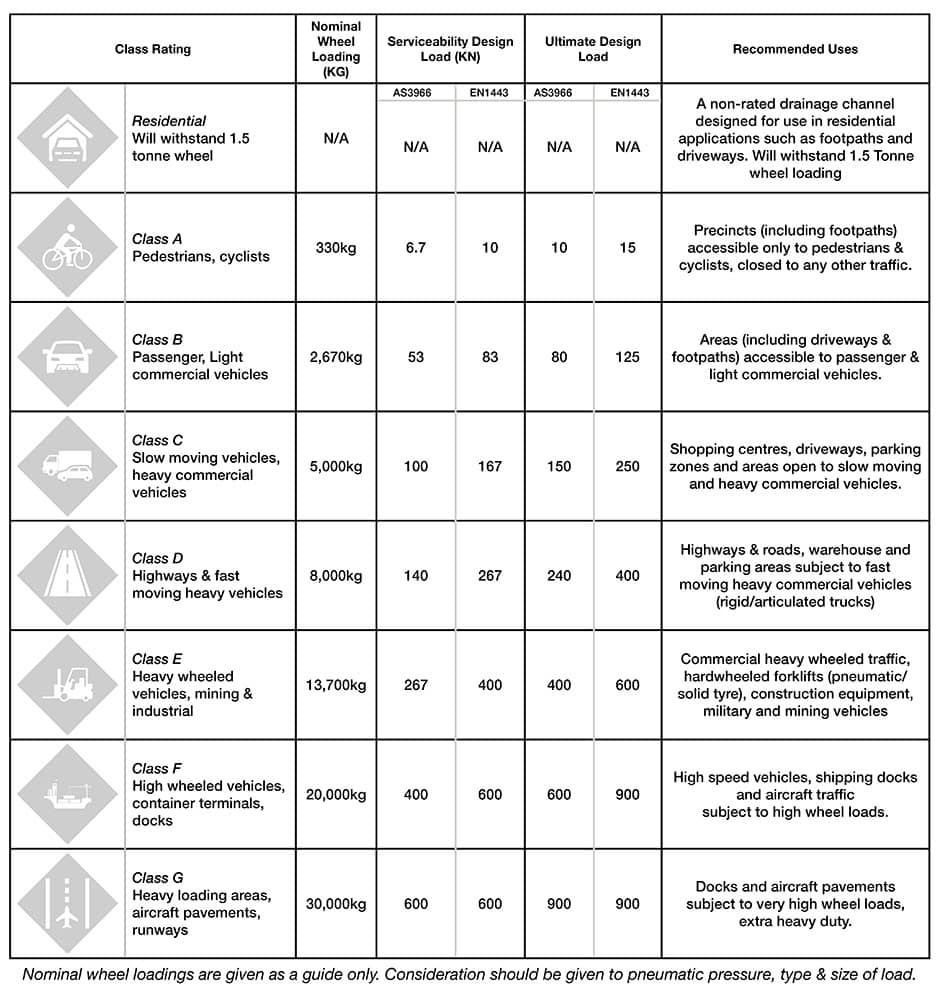Grates are the most exposed parts of the channel and, therefore, they must be able to withstand external loads and stresses. The loads are classified by the UNI EN 1433 standard, which also defines the characteristics and parameters that the grates must have according to the load they must withstand.
To find out which load class your driveway drainage grate should be, please see to the below table & refer to the nominal wheel loading column.
What is nominal wheel loading?
The nominal wheel loading refers to the weight of 1 wheel of the vehicle.
For example, if you estimate the heaviest vehicle that will be driving over the drain weighs 2215kg. The nominal wheel loading is 553.7 kg (2215 ÷ 4 = 553.75). Therefore you will require a Class B rated grate (Class B nominal wheel loading is 2670kg).
The below table displays the 6 load classes, from the lowest one (A15) suitable for green areas such as pavements and gardens, to the highest one (F900) suitable for areas used by heavy vehicles such as airports or industrial areas. A Class B trench drainage grate is usually suitable for a driveway.

Simplified Explanation
- Class A Drains
- Class B Drains
- Class C Drains
- Class D Drains
- Class E Drains
- Class F Drains
- Class G Drains